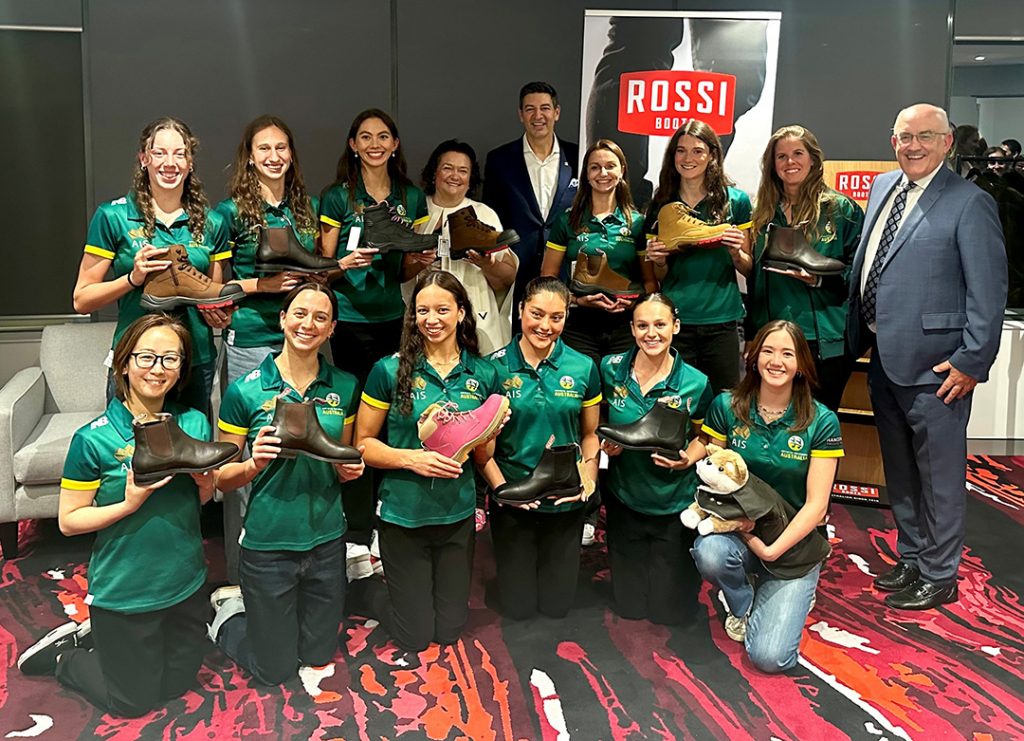
Last night, June 10th, we honoured the incredible legacy of Lang Hancock on his birthday. As a pioneering force in the mining industry, his contributions have left an indelible mark on West Australia’s and Australia’s history and future. Indeed, in her speech Mrs Rinehart pointed out the history prior to Lang Hancock’s discovery and eight year long battle to lift the federal embargo on the export of iron ore in 1960, and the further battle to lift the state’s ban on titles for iron ore (outside of one exception), and effort to introduce miners and investors to the then very remote region, lifted West Australia from a mendicant state to one which helps support the country.
As Mrs Rinehart explained, back in the 1950s it wasn’t easy for her dad to make the travels to Canberra and Perth for these battles. He’d need to arrange 44-gallon drums to be delivered to stations so he could refuel on his long hops in a tiny aircraft. There were no billions of dollars of taxpayers’ funds being tipped into hydrogen, geoscience studies or the infrastructure that was needed to develop the mines.
Instead mining companies’ executives were personally flown around the Pilbara by her dad, pointing out better routes for roads and rails, from deposits he’d found.
The WA government didn’t understand the size or complexity of this game changer for West Australia. As an example, when Mr Hancock encouraged executives to visit from overseas, keen to invest significantly in and develop the Pilbara, and sought a meeting with the then government, Charlie Court replied he was too busy.
It was these private companies that invested and built the mines, built the mining towns, even the police stations, post offices, airports, roads, schools, sporting facilities, air conditioned shopping centres, including facilities for hairdressers, greatly welcomed by the women in the north! Not the government. It was the mining companies who built the roads, the rail, the ports, not the government. It was the mining companies and still is, who gave thousands of people employment, that is, after getting through the then much smaller government obstacles and approvals system. It was and still is the mining companies that pay the state royalties for being able to mine, from rocks otherwise earning nothing in the ground, royalties, licence fees and more, that helps to provide for the nurses, police, emergency services and more that the state budgets can provide today.
It may be popular to say the governments helped in all this, but a closer look is warranted. The delay caused by the then state government in the early 60s let Japan and Asia know that the Pilbara was a treasure trove for iron ore, sitting in their backyard. This changed the market dynamics, from a supplier’s market, to a buyer’s one, knocking what was then huge dollars back then, hundreds of millions off iron ore contracts.
The “government’s contribution” didn’t stop there, before there was any rail and port infrastructure built, Lang Hancock brought the then world’s richest man, Daniel K Ludwig, to West Australia, to develop an integrated rail and port system, that would have saved the West Australian iron ore industry billions and billions of dollars. Yet the state government back in the early 60s knocked that back.
The “government’s contribution” didn’t stop there, later, instead of letting companies deal with companies overseas for markets, the then state government wanted to progress its then favourite, and knock another it didn’t like. This caused the steel industry that wanted the latter, to open Brazil. How much has that cost Australia?
As Mrs Rinehart reminded us, the government doesn’t have any crystal ball, it believed Australia would be importing iron ore by 1965, hence the iron ore export embargo, that Lang Hancock, knowing better, battled eight years to get lifted. What perseverance!
Mrs Rinehart also reminded those attending the celebration, that it’s not only businesses that suffer with government approvals delays, the old time is money, but also all those wanting to work in the industry, currently providing more than double the average national wages, wanting to aspire to a safer car or help their families, or be able to afford a mortgage for their first home, or pay off their mortgage. And that mines aren’t like sheep where wool automatically grows, but new mines and mine expansions are needed, hence approvals and other tape burdens need to be cut, for the revenue to continue.
Mrs Rinehart finished by suggesting we need to go “up”, up with investment, up with high paying job opportunities, up with living standards, not down, down with lower investment, less high paying job opportunities and lower living standards.
The event was also an opportunity to celebrate some other hard working and inspiring Australians – our artistic swimmers before they jet off overseas, off to a competition in Budapest, and then onto Paris.
And that’s not all! We were thrilled to then give guests a sneak peek of some exciting new things in store for Rossi Boots. Including the Lang and Hope Hancock mining boots launched on Lang Hancock’s birthday. The pink one continuing the tradition of pink across our sites to support women diagnosed with breast cancer, and the many women working at our mines in the north. Built for durability and comfort, Rossi continues to set the standard with features designed to support you through every adventure. Stay tuned for more updates!
